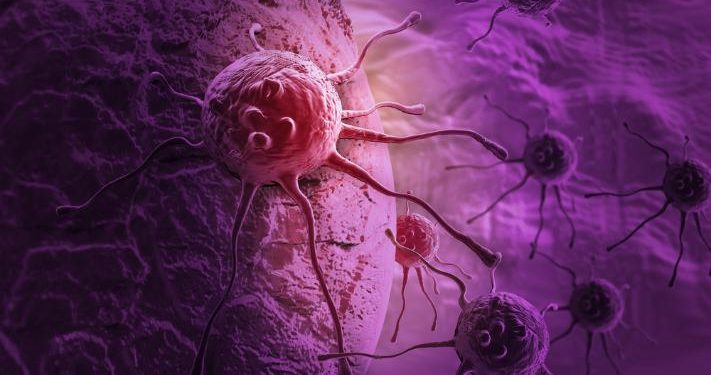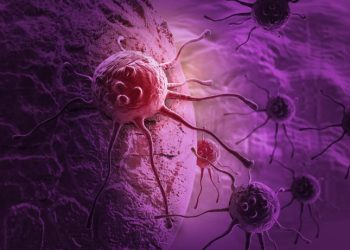People with neuroendocrine tumors often don’t know they have a problem. Frequently, a doctor will diagnose a NET based on a patient’s symptoms, or it might be discovered by chance during an operation or imaging test.
NETs occur throughout the body, but are most common in the gastrointestinal tract and pancreas. These tumors produce hormones that affect specific organ function, causing unique symptoms.
Symptoms
Symptoms of neuroendocrine cancer can vary, depending on where the tumour is and whether it makes hormones. Those that make hormones release them into the bloodstream, which can cause symptoms like pain in your stomach or intestines. Your doctor will ask you about your symptoms and do tests to find out what’s causing them.
Some NETs don’t produce any hormones and may not cause any symptoms at all. Others may produce hormones that cause your body to overwork, causing other symptoms like flushing, breathlessness and changes in blood pressure. Sometimes the tumours make hormones that can cause a disease called carcinoid syndrome. It can happen in people with NETs of the gastrointestinal tract or the lungs. It causes a mixture of symptoms like diarrhea, breathing problems and flushing, and a build-up of acids in the digestive tract.
You might also get a lump or a bump that doesn’t go away or changes in your skin colour, especially on the face, neck and arms. Other symptoms include a loss of appetite, weight loss and a tired feeling. In some cases, your doctor might need to take a small sample of the tumor for testing (biopsy). They might do this by inserting a thin tube with a camera and lights on the end into your lungs (bronchoscopy), into your esophagus and stomach (endoscopy) or into your rectum (colonoscopy).
If you have neuroendocrine cancer, you’ll have more treatment options than ever before. But there’s no typical treatment sequence, because every patient’s case is different.
Symptoms from neuroendocrine cancer can be similar to those of other conditions, so you might not think it’s a serious problem. But if you have a symptom that lasts for several weeks, it’s important to see your doctor to check if it could be a NET. You might need more tests to confirm the diagnosis, including an MRI or CT scan. Surgical removal of the NET might help to relieve your symptoms. But if the tumour isn’t growing or spreading, your doctor might decide to watch it instead and give you medications to control your symptoms.
Diagnosis
The diagnosis of neuroendocrine tumours is based on a combination of symptoms, signs and tests. These include blood and urine tests, X-rays, CT scans and MRI scans, and a biopsy (where doctors take a small piece of tissue for closer examination).
Because NETs can occur in different parts of the body, they can be difficult to spot. For this reason, people with a NET often have many symptoms and see their GPs several times before they are diagnosed. It can also be a long time between the onset of symptoms and diagnosis. This can be because a NET is very slow-growing and grows so slowly that it takes some time for the first signs to become noticeable. It can also be because a NET is in a part of the body that you don’t notice, such as the lining of your digestive tract or the lungs.
If a NET is caught early, it may be possible to remove the whole tumour and cure you of all your symptoms. For example, a NET in the bowel lining called a somatostatin tumor can make too much of the hormone serotonin, causing carcinoid syndrome. If the somatostatin tumor is caught early enough, your doctor can treat it with medication that stops it producing so much serotonin.
In addition, there are medications that can be used to reduce the amount of hormones released by a NET, for instance somatostatin analogs which act like the natural hormone somatostatin and reduce their secretion. There are also new therapies such as PRRT that can be used to destroy the cancerous cells by sending a radioactive substance to them.
There are two ways of classifying neuroendocrine tumours, based on how fast or slowly they grow and how closely they look to healthy cells under a microscope. This system is used to create your treatment plan. It is important to understand this system because it might help you understand the type of treatment that might be best for you. Some NETs are referred to as neuroendocrine tumours (NETs) and others as neuroendocrine carcinomas (NECs). The former are slower growing and the cell changes are more easily recognised as cancerous, so they are labelled well-differentiated. The latter grow more quickly and are labelled poorly-differentiated.
Treatment
Neuroendocrine cancer starts in specialized cells called neuroendocrine cells. These cells are located in several organs throughout the body and release hormones into the blood to control other organs or cells. When the cells become cancerous, they grow and release too many hormones. The overproduction of hormones can cause a wide range of symptoms in different parts of the body. These tumors can grow slowly over years or they can be aggressive and spread (metastasize) quickly.
A NET may look like a painless hard nodule under the skin, or it can be found as a lump in a mole, a cyst, or a hernia. Some people who have a NET don’t have any symptoms at all. Other people have flushing, asthma-like wheezing, or changes in bowel habits, such as diarrhea.
The diagnosis of a NET is made by doing a physical exam and by ordering tests. These may include a complete blood count, a chemical test of the urine, and a test to look for excess hormones in the blood. Your doctor will also order imaging tests, such as an MRI or a CT scan. These create pictures of the area in your body to help find the tumor and see if it has spread.
If your doctor thinks you have a NET, he or she will need to remove a sample of cells for further testing (biopsy). To do this, your doctor might insert a thin tube with a camera and lights down your throat into your esophagus and stomach, or down your rectum into your large intestine. He or she might also do a procedure called endoscopic retrograde cholangiopancreatography (ERCP) to view the bile ducts in your liver and pancreas.
Some types of NETs can be treated with medicines that kill fast-growing cancer cells. These medicines may be given by mouth or injected into a vein. They might be combined with surgery or radiation therapy. Other treatments might include a drug that prevents your liver from making too much clot-forming protein or a procedure called hepatic artery embolization.
Your doctors at the OSUCCC – James are experts in treating neuroendocrine cancer. They will review your case and discuss all of your treatment options with you.
Prevention
There is no known way to prevent a neuroendocrine tumor (NET). Most NETs happen in the pancreas. It’s a long, flat gland behind the stomach that makes enzymes and hormones that help digest food. Some NETs cause symptoms like a fatty stool, a lump in your throat or an abnormally fast heartbeat. Others don’t cause any symptoms.
Pancreatic neuroendocrine tumors develop when cells in the pancreas develop changes in their DNA. These changes let the cells grow and multiply more than they should. The extra cells might form a mass called a tumor or they might spread to other organs.
Neuroendocrine cells are in many places in the body. They watch for signals from nerve cells and then make hormones to control activity in the organ where they’re located. Usually these hormones don’t harm your health, but sometimes they start to make too much and throw the body out of balance. These abnormal hormones might also spread to other parts of the body, causing more serious symptoms.
There’s no known way to prevent gastrointestinal tract neuroendocrine tumors, or carcinoid tumors. But if you have certain risk factors, you may have an increased chance of getting them.
A family history of a neuroendocrine tumor increases your risk. So does a genetic syndrome that you have at birth, such as von Hippel-Lindau disease, neurofibromatosis 1 or tuberous sclerosis complex.
New ways to prevent cancer are being studied in clinical trials. To find out more, visit the NCI’s clinical trials search webpage.








